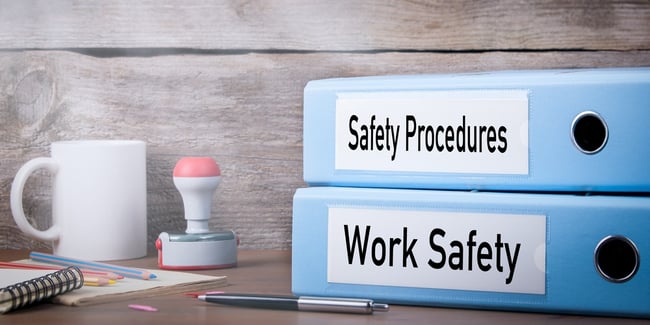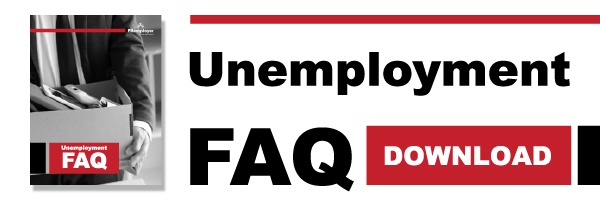
Safety is vital. You have an obligation to protect your employees, and doing so is also good business. Safety-minded companies support productivity and morale, while reducing unnecessary downtime. Having a safe work environment, however, relies on proper communication, solid policies and, above all, great training.
So, how can you create a safe work environment and develop a company culture that best allows your employees to protect themselves and each other?
Implement Great Training
Safety starts with training. Every new hire needs to go through proper safety training and orientation as a baseline. Regular, ongoing refreshers and updates are also important for existing employees.
"Microlearning," where employees do little bits of periodic training reinforces previous safety training, as it helps keep essentials fresh in your employees' minds. Make sure that safety guidelines, whether digital reminders or signs and posters, are easily accessible and readily visible. Make it clear to all employees that they should not be afraid to keep checking the guidelines, and that doing so will help keep them safe.
Putting together a training program can be challenging, but it is vital.
Develop a Safety Reward System
Incentivize your employees to follow proper safety guidelines with rewards, even if they’re as simple as praising or thanking employees for following guidelines. Commend workers for wearing proper protective equipment, using proper lifting techniques, taking lockout/tag out measures, being careful in confined spaces, or following HAZMAT requirements, among others.
Give out commendations or small rewards when you witness employees being safe and careful. Positive reinforcement is normally more effective than disciplining people for not being safe. However, in extreme cases, it is sometimes necessary. For instance, if you see an employee about to do something highly likely to get them hurt, such as not putting their helmet back on after a break. People generally respond better to rewards than to punishment.
Pay particular attention to employees who are supporting the ability of others to stay safe by helping new employees understand the rules and looking out for each other.
However, using a daily safety tracker is discouraged. Recording consecutive days without an accident seldom reduces the number of incidents. It typically only reduces the number of reports, in turn encouraging employees to ignore unsafe behavior and even to fail to report injuries. Accidents happen occasionally no matter how well everyone is trained and behaved. By focusing on collective accomplishments, and not collectively punishing for lapses, you create a more focused and safer workforce.
Clearly Label and Keep Your Workplace Clean
In many workplaces, clutter can be hazardous. Organizing and labeling all supplies and equipment properly makes it easier for people to find things, but it also reduces clutter. Ensure that employees know that all equipment should be returned to its proper storage location after use. Industrial settings must be particularly mindful, but it’s also an issue in offices if you are handling large amounts of paper files and boxes.
Make cleaning and checking stations part of the routine policy, instilled from HR forward. If people get into the habit of always taking five minutes to clean and tidy their desk at the end of the day, it reduces hazards. Keeping everything tidy also greatly increases productivity by ensuring that people can always find what they need.
Encourage Healthy Behavior
You can reduce the risk of injury by improving your overall health and fitness. This is particularly important for office workers, who should be encouraged to get up and stretch. Make sure you are clear to people who work a desk job that taking a five minute stretch break as needed will do the exact opposite of getting them into trouble. Manual laborers also need to stretch and need to learn proper form, such as how to lift correctly.
Having a wellness program that helps people get advice on fitness, nutrition, and proper sleep, can reduce accidents (as well as health insurance claims). Having good benefits and encouraging your employees to get all of their routine preventive care can also help. Fatigue is a particular concern in any job which involves machinery, and making sure that your employees get enough sleep is vital. This also means being careful with shift scheduling and scheduling people to work with, not against, their natural rhythms.
Hold Regular Safety Meetings
Nobody likes meetings, but regular safety meetings are vital to help remind employees of safe practices, update policies, and/or review past practices to commend or correct behavior.
Make sure that safety meetings don't turn into safety lectures. Be ready to take feedback. For example, if senior employees tell you a safety policy is not working, they may well have legitimate reasons to believe so and may well be in the perfect position to help you update the policy. An open dialog also means letting employees ask questions without judging them or yelling at them if they admit they aren't doing something quite right. Instead, it should be very much about ensuring that everyone knows safe practices and that policies are adjusted to reflect what is really needed on the floor.
Promoting employee safety is vital to sustain productivity and profit. These tips can help you do so, but you also need a strong HR system. A good HR system can help develop safety training and reward programs, improve employee wellness, and schedule regular meetings. Partnering with a PEO can help by taking burdens away from your HR staff and also by allowing you to benefit from their experience in developing safety programs and policies.

